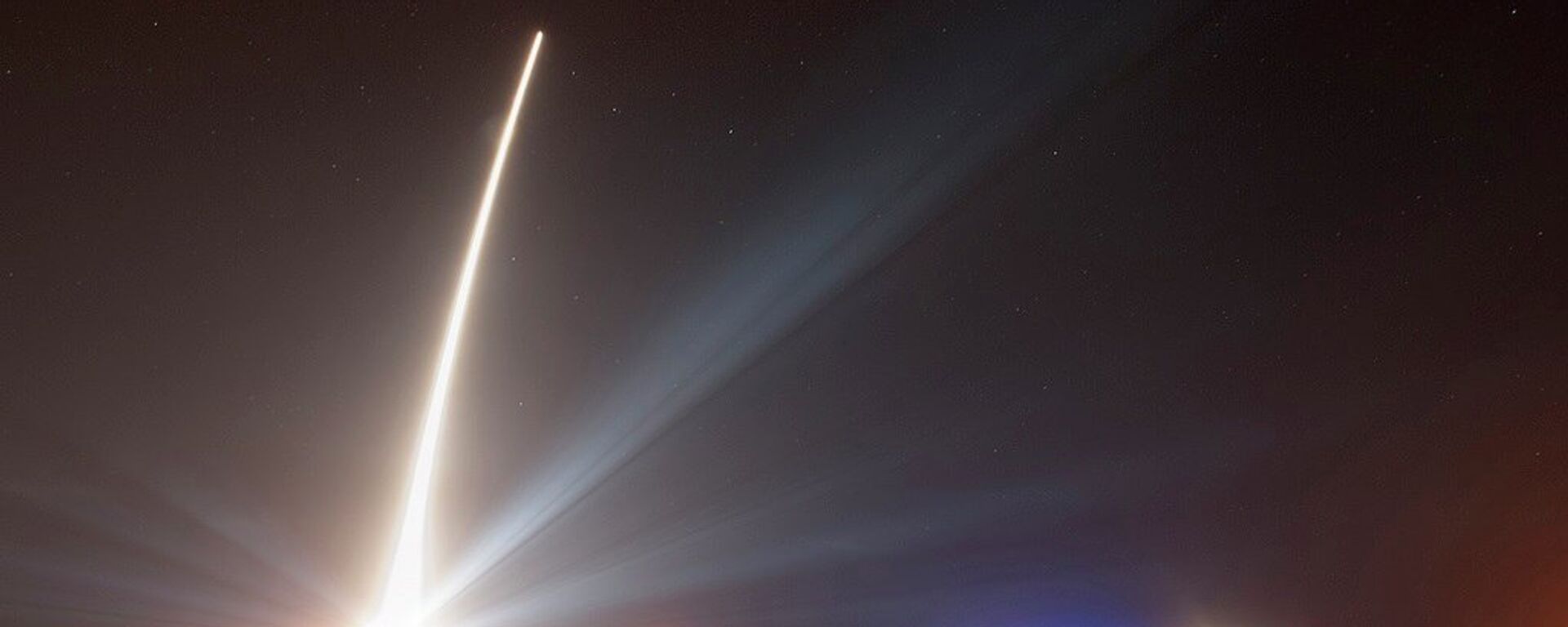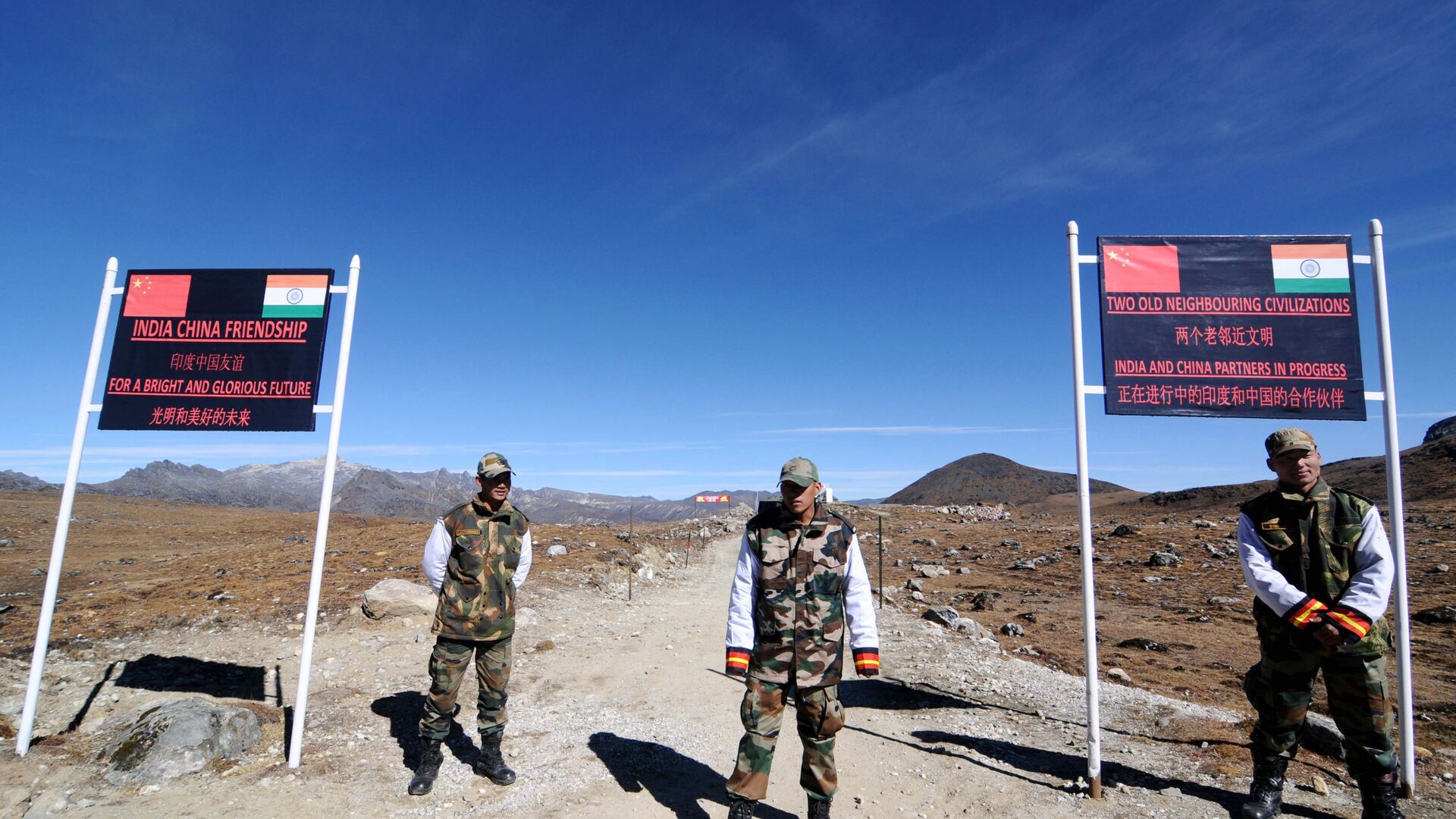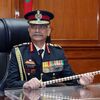https://sputnikglobe.com/20211011/blame-game-erupts-as-india-china-fail-to-make-headway-in-military-talks-to-cool-border-tensions-1089824708.html
Blame Game Erupts as India, China Fail to Make Headway in Military Talks to Cool Border Tensions
Blame Game Erupts as India, China Fail to Make Headway in Military Talks to Cool Border Tensions
Sputnik International
On Sunday, military commanders from India and China met for the 13th time since June of last year to discuss the ongoing border standoff. The two sides have... 11.10.2021, Sputnik International
2021-10-11T08:59+0000
2021-10-11T08:59+0000
2022-07-19T10:39+0000
pla
ladakh standoff
china
indian army
arunachal pradesh
people's liberation army (pla) navy
https://cdn1.img.sputnikglobe.com/img/07e4/09/0f/1080462828_0:170:3037:1878_1920x0_80_0_0_a35bc30422ffa9d7f38b78d7c271db9e.jpg
Statements from the armies of India and China on the 13th round of talks between corps commanders have suggested a stalemate in the long-running negotiations to defuse the crisis in Ladakh along the loosely demarcated Line of Actual Control (LAC). China blames India for persisting in "unreasonable and unrealistic demands" during the nine-hour talks held at the Moldo-Chushul border meeting point on the Chinese side.Contrary to these demands, Colonel Long claimed that the Chinese side made great efforts to promote the easing and cooling of the border situation. He said the PLA officers demonstrated sincerity in maintaining the overall interests of bilateral military relations.A few hours later, the Indian Army contradicted China's claim and issued a separate statement, saying that the Chinese side was "not agreeable" and "could not provide any forward-looking proposals" in response to New Delhi's "constructive suggestions".The Indian side made it clear that the meeting did not result in the resolution of the remaining sticking points.The two sides urged each other to abide by relevant agreements (the border agreements of 1993, 2005) and collectively safeguard peace and stability in the border areas.Since the standoff began in May 2020 over infrastructure construction, the two sides have disengaged from Patrol Point 14 or PP14 in the Galwan Valley, PP17A at the Gogra Post, and the north and south banks of Pangong Tso. The previous meeting between military commanders was held on 31 July. Officials from the two sides were hopeful of an early solution in Hot Springs, where a Hindustan Times report says that some 50 PLA personnel are stationed inside India's percepted line of the LAC. There is a serious deadlock persisting over the claim in the Depsang Plains as well, where it is reported in the Indian media that PLA troops have built infrastructure inside India's percepted line of the LAC. The two countries had agreed to hold the 13th corps commander-level talks even as there are reports of faceoffs between patrol units from the two armies at various places along the LAC. Indian Army Chief General Manoj Mukund Naravane said last Saturday that China has been building infrastructure in the region and was "here to stay".However, the Indian Army chief emphasised that India is ready to tackle any misadventure. The army will also stay in the eastern Ladakh area, with increased intelligence, surveillance, and reconnaissance facilities, he added.Tensions escalated to an unprecedented level in June 2020, when 20 Indian soldiers and four People's Liberation Army members were killed in a violent clash in the Galwan Valley.
https://sputnikglobe.com/20211010/india-nowhere-near-china-in-space-deterrence-but-cant-lose-focus-experts-1089788774.html
ladakh standoff
china
arunachal pradesh
Sputnik International
feedback@sputniknews.com
+74956456601
MIA „Rossiya Segodnya“
2021
Rishikesh Kumar
https://cdn1.img.sputnikglobe.com/img/07e4/08/04/1080055820_0:0:388:389_100x100_80_0_0_40018ee210946d65d49ffba4f4c008e1.jpg
Rishikesh Kumar
https://cdn1.img.sputnikglobe.com/img/07e4/08/04/1080055820_0:0:388:389_100x100_80_0_0_40018ee210946d65d49ffba4f4c008e1.jpg
News
en_EN
Sputnik International
feedback@sputniknews.com
+74956456601
MIA „Rossiya Segodnya“
Sputnik International
feedback@sputniknews.com
+74956456601
MIA „Rossiya Segodnya“
Rishikesh Kumar
https://cdn1.img.sputnikglobe.com/img/07e4/08/04/1080055820_0:0:388:389_100x100_80_0_0_40018ee210946d65d49ffba4f4c008e1.jpg
pla, ladakh standoff, china, indian army, arunachal pradesh, people's liberation army (pla) navy
pla, ladakh standoff, china, indian army, arunachal pradesh, people's liberation army (pla) navy
Blame Game Erupts as India, China Fail to Make Headway in Military Talks to Cool Border Tensions
08:59 GMT 11.10.2021 (Updated: 10:39 GMT 19.07.2022) On Sunday, military commanders from India and China met for the 13th time since June of last year to discuss the ongoing border standoff. The two sides have been accusing each other of encroaching upon their territory in the western sector of the Line of Actual Control.
Statements from the armies of India and China on the 13th round of talks between corps commanders have suggested a stalemate in the long-running negotiations to defuse the crisis in Ladakh along the loosely demarcated Line of Actual Control (LAC).
China blames India for persisting in
"unreasonable and unrealistic demands" during the nine-hour talks held at the Moldo-Chushul border meeting point on the Chinese side.
"Instead of misjudging the situation, the Indian side should cherish the hard-won situation in China-India border areas", said Senior Colonel Long Shaohua, spokesperson for the Western Theatre Command of the People's Liberation Army (PLA), on Monday.
Contrary to these demands, Colonel Long claimed that the Chinese side made great efforts to promote the easing and cooling of the border situation.
He said the PLA officers demonstrated sincerity in maintaining the overall interests of bilateral military relations.

10 October 2021, 04:00 GMT
A few hours later, the
Indian Army contradicted China's claim and issued a separate statement, saying that the Chinese side was "not agreeable" and "could not provide any forward-looking proposals" in response to New Delhi's "constructive suggestions".
"The Indian side pointed out that the situation along the Line of Actual Control (LAC) had been caused by unilateral attempts of the Chinese side to alter the status-quo and in violation of the bilateral agreements", the statement issued by the Indian Army read. "It was therefore necessary that the Chinese side take appropriate steps in the remaining areas so as to restore peace and tranquility along the LAC in the western sector".
The Indian side made it clear that the meeting did not result in the resolution of the remaining sticking points.
The two sides urged each other to abide by relevant agreements (the border agreements of 1993, 2005) and collectively safeguard peace and stability in the border areas.
Since the
standoff began in May 2020 over infrastructure construction, the two sides have disengaged from Patrol Point 14 or PP14 in the Galwan Valley, PP17A at the Gogra Post, and the north and south banks of Pangong Tso.
The previous meeting between military commanders was held on 31 July. Officials from the two sides were hopeful of an early solution in Hot Springs, where a
Hindustan Times report says that some
50 PLA personnel are stationed inside India's percepted line of the LAC. There is a serious deadlock persisting over the claim in the Depsang Plains as well, where it is reported in the Indian media that PLA troops have built infrastructure inside
India's percepted line of the LAC.
The two countries had agreed to hold the 13th corps commander-level talks even as there are reports of faceoffs between patrol units from the two armies at various places along the LAC.
Indian Army Chief General Manoj Mukund Naravane said last Saturday that China has been building infrastructure in the region and was "here to stay".
"It is a matter of concern that the large-scale build-up which had occurred, continued to be in place and to sustain that kind of build-up, there has been an equal amount of infrastructure development on the Chinese side. It means that they're there to stay".
Gen Manoj Mukund Naravane
Chief of Army Staff, Indian Army
However, the Indian Army chief emphasised that India is ready to tackle any misadventure.
The army will also stay in the eastern Ladakh area, with increased intelligence, surveillance, and reconnaissance facilities, he added.
Tensions escalated to an unprecedented level in June 2020, when
20 Indian soldiers and four People's Liberation Army members were killed in a violent clash in the Galwan Valley.




